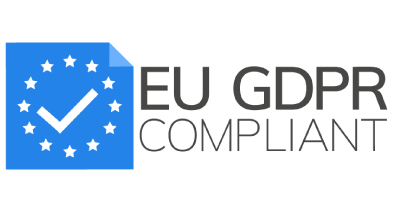Payroll reconciliation might be a job that is unwelcome at this busy time of year, but it’s a critical component to shadow payroll. This brief guide will explain what you need to know about reconciling tax for shadow payroll —including quick tips and long-term strategies to lessen the burden.
Many companies may be going through this process right now for countries with a tax year-end of 31 December 2021. For example, there tends to be a huge exercise across many companies in the USA to check that all global compensation is captured to ensure correct tax and (where applicable), the necessary social security payments have been reported.
Some companies will also be looking to their tax providers to analyse the additional compensation to be reported and prepare any necessary tax gross-ups.
This exercise can be very time intensive and costly, causing a lot of unnecessary stress when there are so many other tasks also required at year-end. It’s often cited as one of the biggest challenges because there’s usually not a robust, repeatable process to address the volume of disparate data sets and system silos.
What is shadow payroll reconciliation?
In finance terms, “reconciliation” is the process of ensuring all records of the same event are complete, matching, and accurate.
In the context of shadow payroll, it’s essentially a review of what has been reported via the (shadow) payroll (commonly in host location), often compared against what was reported in the actual payroll (usually the home payroll) and perhaps by other vendors, to capture any payments/benefits that were missed in either the home/host shadow payroll reporting process.
Put off shadow payroll reconciliation and you’ll have a lot of piled-up work waiting for you when it comes time to submit your periodic tax deposits and tax forms. Get it wrong, and you risk hefty fines.
The payroll reconciliation process is important for several reasons. First, it helps ensure you are running a compliant shadow payroll. It also helps you maintain accurate records for financial reports and compliance, reducing the exposure to risks such as:
🚩 Compliance risks - Failure to correctly report all compensation in either the home or host location could result in underpayment of tax, which could lead to penalties and/or interest as well as increased audit risk rating, which could eventually trigger a payroll audit. Where the under-reported compensation is added directly to the tax return, this could result in noncompliance for various social and/or payroll taxes which are not reconciled via the tax return.
🚩 Budgetary risks - Monthly under-reporting will lead to erroneous budget planning and is misleading with regard to mobility program cost. Also, not all employers can afford to have the large sum of budgets approved when employees’ tax returns are submitted.
🚩 Reputational risks - Underpayment of tax constantly puts companies in the spotlight leading to reputational damage, which almost always has commercial consequences.
Failure to perform accurate payroll reconciliation in time can also create problems for employees, should there be additional tax due when filing the tax return, if the payroll isn’t adjusted. If the employee is not funded timely, this could lead to additional anxiety and stress over financing the bill. It can also cause a potential red flag for audit at the employee level, which may lead to an undesirable employee experience and stress. Plus, the additional administrative burden to employees if a sizable amount of tax needs to be settled or refunded for the personal tax filing.
This is why automation is often an attractive opportunity for the shadow payroll reconciliation process.
Why manual shadow payroll reconciliations are painful
- How much time does your team spend reconciling shadow payroll—every period, quarter, and year-end?
- Does the team often work extra hours under time pressure?
- Have tax fines or penalties impacted your company?
- Are you required to add or reallocate resources to payroll at peak times to handle seasonal volume or tax deadlines?
No doubt, your company has experienced or is experiencing some of these issues. These pain points are usually created by the following underlying challenges:
Disparate data sources
The sprawl of data across many different systems is a significant barrier to efficiently checking that compensation, benefits, and tax deductions all tie out. Together, they form the recipe for an incredibly high-volume, resource-heavy, repetitive process to ensure accuracy.
Multiple geographies and jurisdictions
Tax compliance is a significant issue, especially given increased employee mobility across geographies. Each tax jurisdiction often requires different tax treatment, varied levels of tax withholding, reporting requirements, and year-end processing. In many cases, payroll is still distributed across the enterprise, with varying methods and technology used to process it.
Sheer complexity
The sheer volume of different data inputs and deductions that must be reconciled can be overwhelming. When there are varying requirements of each tax jurisdiction, it’s easy for mistakes to creep in.
Lack of Accountability
The final challenge is that there’s usually limited accountability of the process, especially when errors are found. If there is no centralised system to manage shadow payroll at each stage of the process, issues can quickly bounce between teams.
Quick tips to improve tax reconciliation today
Every company with a shadow payroll requirement needs to maintain accurate records for shadow payroll reconciliation. There are some things you can do immediately to streamline reconciliations and make your life much easier.
💡 Top tips
1. Identify all potential sources of compensation to be gathered. Where several sources are possible, determine the best source by ranking data sources by their integrity, quality, and accessibility.
2. Plan early and lay out a clear timeline for all tasks to agree with all stakeholders, prioritise countries where post-year adjustment is impossible.
3. Consider country where the fiscal year is different to the calendar year and diarise these for separate processes
4. Don’t forget about the Home payroll compliance! Use the opportunity to check whether any items need to be reported back to the Home (or the actual) payroll location. Items such as benefits paid by vendors or tax paid via shadow payroll in host location can be missed when such items are still taxable at Home payroll.
5. Set time for post reconciliation review with stakeholders and relevant vendors, with an aim to improve the future monthly process and simplify the need for bulk annual reconciliation.
6. While not necessarily a quick tip you can put in place right this second. It’s worth mentioning that you can avoid year-end reconciliations altogether by filing shadow payroll in real-time.
How can shadow payroll automation make payroll reconciliation accurate and easier in the long term?
Comparing payroll to your ledger might seem straightforward in theory if you have a handful of globally mobile employees. At scale, the task’s challenges grow exponentially.
Adopting an automated solution could reduce the time spent on payroll reconciliation from days or weeks to a matter of minutes - giving you time back to focus on the analysis instead.
In addition to these quick tips mentioned above, there are a few long-term strategies that will improve your shadow payroll reconciliation process.
Strategy one: A more automated shadow payroll will encourage the adoption of monthly accurate shadow payroll runs and therefore reduce the possibility of significant under-withholding on a monthly basis.
Strategy two: Sophisticated mapping supported by the automation allows the inclusion of more comprehensive compensation, which will be subject to accurate treatment, leaving less surprise towards year-end.
Strategy three: An automated system can also provide a clear view of data in the required format - showing what is processed in the shadow payroll making reconciliation less of a manual process.
Strategy four: Batch reconciliation calculations supported by automation will also massively reduce the time pressure normally faced by mobility teams during the Month 12 process.
Next steps
While you might tend to think about shadow payroll reconciliation at the end of the tax year, you can avoid the problem entirely by adopting an automated shadow payroll platform.
In addition to shadow payroll reconciliation, automation offers plenty of other opportunities for you to improve your shadow processes. A specialised shadow payroll platform can automate almost all the steps of the shadow payroll process and requires only minimal human intervention. It ensures efficiency and eliminates effort.
We have an in-depth guide to shadow payroll maturity. This is a must-read if your current shadow payroll processes are holding you back and making it difficult to reconcile your shadow payroll. Download it here.
Ready to simplify your shadow payroll? Learn more, or Book a consultation now.

-1.png)
.png)
.png)




